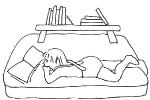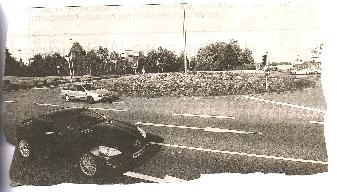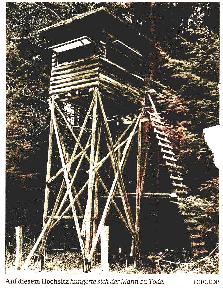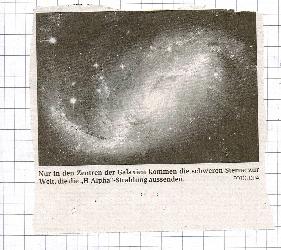by Isabel Bonifert-Manig
For almost 2 years some 3 – 6 years old children in my kindergarten occupied themselves with the daily newspaper, the >General Anzeiger< from Bonn, which itself covered this initiative in its paper, and so did the WDR [Westdeutscher Rundfunk = West German Broadcasting Company].
The newspaper project started like this:
One day Gregor, 4 years old (name changed), approached me and inquired:
“Why does my mother always know which clothes I should wear?”
My Response: “She knows what the weather is going to be like, maybe from TV or from the radio.”
I realised that Gregor would have also liked to know ahead of time what the weather was going to be like, so that he could choose for himself what clothes to wear.
“We don’t have a radio or a TV in our kindergarten, but I can bring the newspaper.” Later in the course of the project a subscription of the >General Anzeiger< was taken out for our kindergarten.
…in a nutshell…
The author is describing how she got her group acquainted with the print medium ‘newspaper’. It shows that many – especially the gifted – children profit from an ongoing occupation with a good local newspaper. The children gather information, think about it, communicate about it among each other and eventually begin creating their own newspaper in the form of a diary. All the while they practice their reading and writing skills.
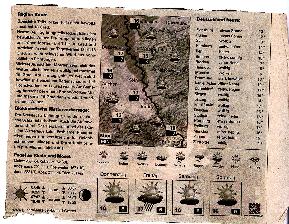 So, at first, tied in with Gregor’s original inquiry, we started reading the weather forecast in the newspaper. Symbols were being identified; nuances in terminology were discovered, for example:
So, at first, tied in with Gregor’s original inquiry, we started reading the weather forecast in the newspaper. Symbols were being identified; nuances in terminology were discovered, for example:
it drizzles, it rains, it pours, it snows.
Or: „Today we will have 9° Celsius. It will be dark and not so bright. It will be overcast.”
Or: „It’s supposed to be raining here; but at 8.10 o’clock there is nothing to be seen of it.”
Or: “It’s been raining hard, I have a raincoat and it’s rainproof.” – “We have had the water coming into the car, the roof is leaking.”
The children kept linking the news to their own lives effortlessly.
The weather forecast in the paper was being checked by the children on a daily basis. They looked at the weather through the window or went outside. Sometimes they came back and shouted:
“Wrong weather! They made a mistake. All cloudy!”

Soon it became clear: It’s not always true what the paper says.
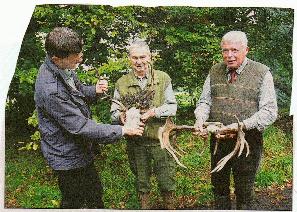 Later on other contents were commented critically, for example:
Later on other contents were commented critically, for example:
„Unfortunately the paper isn’t saying what kind of antlers these are.”
(Julian, 5;2 years)
The children elicited more and more from the weather forecast, for example they noticed, that on the map of Europe Italy almost always had the sun-symbol, which prompted discussions among the children. They also checked what kind of weather some children were having in their holiday destinations.
For me as a kindergarten teacher it was exciting to see
- how much these young children were getting out of reading a newspaper for adults
- how the children kept linking the contents of the paper to their own experience
- how they were “capturing” more and more of the information in the paper
I saw the opportunity to get all children interested in the medium “newspaper” and thereby introduce different topics. This probably only works for somebody who is interested in newspapers himself.
 And I considered this work a great opportunity for the advancement for gifted children, for those who have a gift for language and who are interested in many things, for children with a great craving for knowledge.
And I considered this work a great opportunity for the advancement for gifted children, for those who have a gift for language and who are interested in many things, for children with a great craving for knowledge.From the occupation with the weather soon resulted an increased interest in reports of natural disasters.
Later on the local news came into view; the sports news and reports were interesting too, especially during the Olympics and the European football championship.
The photographs were another gateway to the contents.
What’s to be put into the newspaper-book?
The children, upon some of my suggestions, soon began performing real editorial work. The result of this editorial work is a kindergarten newspaper which took on the form of a book, a diary.
Items included in this newspaper-diary aside from the “News-Item of the Day” were also:
- a drawing called >Picture of the Day<
- the >News of the Day at Kindergarten<
- the >Question of the Day<, sometimes drafted by the children, sometimes taken into the morning circle by me
In the mornings the children come forward and ask:
“Can I make the newspaper today?”
Sometimes that child will work alone, often one or two other children join in. They are the chief editors.
All this happens during free unit studies (see Montessori), the children may approach me with their questions any time.
The chief editors prepare their work space, they get the newspaper, scissors, paper, glue and little baskets in which they collect the cut-out articles and photographs.
They have to deal with the fact that newspapers have a format which is hard to handle for children. Most of the time they start by sorting out the advertisement pages.
The children know where to find the weather forecast, then they check the rest of the paper. They look for the >News of the Day<. They go by the photographs and pictures.
Child 1:
“Do you think this is interesting?”
Child 2:
“Yes, I know about it, let’s take it.”
The children contemplate and discuss what might be the story behind an interesting photograph. They have all kinds of ideas. At this point other children often join in.
„If one person is up there and another starts chopping, the one up top is going to fall down pretty soon.”
(Boy, 5;1 years)
Oftentimes their guesswork with regard to the pictures is rather to the point or at least point in the right direction to a degree that one may leave it at that. Other times the issue cannot be deduced solely from the picture and it takes somebody who can read (myself or some of the children who can already read) to acquire the necessary information. Eventually they always find out what the picture is about.
The news items they have found are then glued into the newspaper-diary under >News of the Day< and I add in writing the exact wording of the remarks the children made.
Often lively discussions are prompted.
Associations come up, the children are being inspired to relate reports of their own experiences or to look into further topics. The children gather their knowledge and sometimes an interesting dispute is raised.
The local news section – a treasure trove
The local news section has turned out to be especially popular. This is where the children recognise places and buildings from their own surroundings.
“We were there, we saw it, and now it’s in the paper.”
Therefore it must be important and I can talk about it.
It also happened more than once that we decided to go to an event that was announced in the paper.
Example: April 8 th , 2008 – Space-Shuttle transport on the Rhine. Parents checked on the internet when the transport was going to pass nearby.
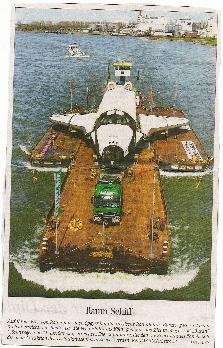 And this is what happened: We were at the Rhine in time to see the Space Shuttle (the Russian Space Shuttle >Buran<) being shipped by.
And this is what happened: We were at the Rhine in time to see the Space Shuttle (the Russian Space Shuttle >Buran<) being shipped by.
The kindergarten newspaper it later read:
>Sven: “It was thiiiiis long”, he runs from one end of the house to the other, “we saw where the fire comes out, and the name was on it, too, I think.”
Selma: “There was a truck, it was strapped on it, the truck is taking it to the museum.”
Sven: “It’s going up the Rhine! (>How do you know?<) I know the route!”<
If on a day several interesting photographs and news items are discovered, which happens regularly, the children can take these to the morning circle and give reasons why they chose the one they did. At first there would only be one News Item of the Day to be put into the diary, later we changed over to putting several items into the diary, if good reasons were given.
The respective chief editor of the day would see to it that a >Picture of the Day< was drawn or chosen. This Picture of the Day is always created freely by one child. Quite different and fantastic things come up this way. Oftentimes we discuss the >Picture of the Day< among the group. Once, for example, it was about a picture of the Punch and the Thief.
Jan (4;0 years) said about it:
„The Punch is stronger than the Thief. Why doesn’t he kill the Thief? I tell you: I don’t know why.”
In order to determine what the news of the day should be, the children reflect upon their experiences in kindergarten and feel out the news value. It’s obvious: there are newsworthy incidences in kindergarten. For example: “Tom is going home all by himself today.”
The > Question of the Day< may be derived from the newspaper, too:
 The editor Rufus wrote below it: „This woman is 100 years old. She has a weird face.”
The editor Rufus wrote below it: „This woman is 100 years old. She has a weird face.”
From looking at the picture Franco came upon the question: “Does growing old hurt?” It was chosen as “Question of the Day” and another boy came up with this answer:
“Sometimes no, sometimes yes. It hurts when you have grandchildren. (>Why?<) Because actually you’re happy but then you get this stomach ache, because you know, that you’re old and everything isn’t as easy as it used to be.
But I don’t know, really. I’ve never been old. How about you, Isabel?”
After some time the newspaper became an object of interest for some children even outside kindergarten. One girl notices with joy:
“Isabel, we have that one at home, too!”
Or:
“At home I saw some nice things in the paper, but I couldn’t find the weather.”
One result of this bleeding over to the families is that children even at home begin to satisfy their craving for information and discuss things with their parents. Some parents told me quite surprised that their children suddenly join in conversations and are interested – and that it would have never occurred to them as parents to see their children in connection with the newspaper.
How is the advancement of the gifted being realised in this project, which became a lasting success?
There is no final frontier when it comes to cognitive challenges. This is how gifted 4 to 5 years old children will proceed with ease and thoroughness from the weather to weather related natural disasters to the question: What is going on with our world? And why is this happening?
Example of a boy, 4 years old:
As “News Item of the Day” he chose a photograph with oil soaked birds, which illustrated an article about a shipping accident and the subsequent oil spill. He commented it:
“That was dangerous and it wasn’t fair of the captain. He should watch out for his ship and for the area and the birds and the sea animals. He just scraped along and then all the oil spilled.”
There was then a project conducted by parents on climate protection and environmental pollution – and the children went right ahead and told about what they had seen in the paper.
The work with the paper prompted many more ideas and deepening conversations where facts were explained further and little projects were initialised around some issues arising.
In the following you see a selection of the many “News Items of the Day” which were documented in the kindergarten newspaper:
„Cars are really important to me. Every child should know this one. It’s a Mercedes. I like it a lot. We have one, too. But it looks different. Our star is on a little stick, not glued on like that.”
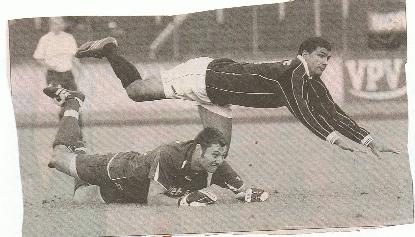 Ina:
Ina:
„They stumbled somehow. They fell.”
Jan:
“Yes, it’s foul play.”
Sven:
“That’s a football match. That one there has those thick gloves, he must be the keeper.”
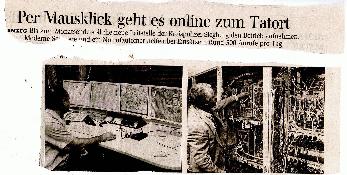 Johannes, 4;5 years:
Johannes, 4;5 years:
[Headline reads: “Via mouse click online to the crime scene”]
„The police have to be very fast, that’s why they need this. In order to catch the robber or to get to the place where the accident has happened, or to write something down or to block a street if there’s a fire.”
„A giant wave is rolling towards the man, he is looking weird!
It’s dangerous if a wave like this is coming, you drown under!”
„The hunter is deer stalking. He wants to shoot some deer or wild boar, rabbits, foxes or wolves. Why is that, anyway?”
„The Olympics are over. Finally he can take some time off!”
Hendrik, 5;7 years:
„I’m interested in stars. I look into this every night and then I see the moon and the stars and I dream of planes. That’s a good thing, right?”
„They’re Indians. Do they look worried? Could there be a war there?”
Sometimes knowledge emerges, which the children have probably already picked up at home and which they rephrase in their newspaper work. Sometimes I have to fill them in on some of the necessary basics. Or they go and get another child who is able to read and have it extract information from the article for them.
One day I asked Ava (6;1 years): “Would you like to do the newspaper today?” and she said:
“Oh, you mean because of Obama?” Next thing we were talking about who Obama was, and she said: “That’s the President of America, like Frau Merkel here in Germany.”
Then Marvin ( 5;9) remarked:
“That’s really interesting, you know. In former times the black people were the slaves, they had no say. Now, for the first time, a slave has the say. And that’s what I really liked, that now he is the commander.”
Some children use their access and occupation with the newspaper to build a sound expertise like for example on the Olympics.
It even gets philosophical
Confronted with the >Question of the Day< the children regularly come up with surprisingly concise answers:
Question of the Day: “What is happiness?”
Children’s answers:
Jan, 4;0 years:
“Happiness is when you’re simply cheerful.”
Sandro, 6;1 years:
“Happiness is when you’re wearing a [Gingerbread-]heart around your neck and you can eat it.”
Marie, 5;10 years:
“Happiness is when you have a friend.”
Sven:
“Happiness is when you have a mom and a dad, because if you don’t you’re really poor.”
This is often followed by extended discussions, or children spontaneously draw pictures inspired by their thoughts.
And this is a selection of the many >Questions of the day<, which were documented in the kindergarten newspaper:
Question of the Day: “What have you ever repaired?”
Answer of a 6 years old boy:
“I once repaired the Electro-Game. The propeller wasn’t working and I saw I had to tighten the cable. Then it worked again.”
Answer of a 4;5 years old boy:
„Well, my little sister cries a lot. I share some sweets with her. That’s how I repair her.”
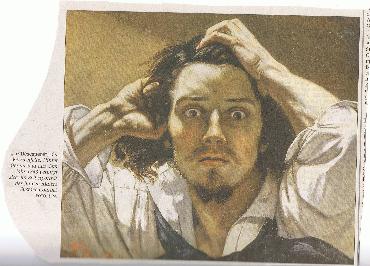 Question of the Day: “What is it to be desperate?”
Question of the Day: “What is it to be desperate?”
Answer of a 4;11 years old boy:
“If you want to build something and it just won’t work, that’s when you get desperate. That’s different from sad, almost like astounded.”
Question of the Day: “Where do thoughts come from?”
Johannes (4;7):
„In the head. Thoughts are in the head, because that’s where the brain is. In the brain is the only place where you can store thoughts.”
Question of the Day: “How do you know you really like somebody very very much?”
Jan (4;1):
„When I look at his face and then I watch him some more. Then I really feel good. Then I want to go and talk to him but most of the time I’m too shy.”
Hans:
„I know, when it makes me want to give somebody flowers.”
Frederik:
„I get a tickling in my stomach.”
Question of the Day: “Why do people celebrate birthdays?”
Michael:
„Because they get presents.”
Tom:
„Because they’re getting older – they’re getting bigger.”
Hans:
„They’re thinking of a good life.”
Answer we found together:
“Because they are happy to have that person, whose birthday it is.”
Johannes:
„I would have an even harder question: When the child is born, it is 0 years old.
Next time 1 year old. But how do the parents notice that the child is getting older and bigger?”
Sven:
„It grows and it learns to do things. Look at Ivo, he has learned to push himself up when he’s lying on his stomach.”
Question of the Day: “Do we really know everything?”
Jan, 5;7:
„No. For example, we don’t know which of the fairy tales were really true. Only the one who wrote them knows.”
Hendrik, 4;9:
„People are smart, but we don’t know everything.”
Viktor:
„No, I’m only three.”
Question of the Day: “Is it possible to stop thinking?”
Jan:
„No, but you have to when you do Yoga.”
Johannes:
„Can’t be stopped.”
Question of the Day: “What are you going to be?”
Adam, 4;6:
„I think I’ll be an astronaut. Then I can fly into space. I saw it in the encyclopaedia. I want to see it for real. I’m taking Armin with me.”
Marvin:
„Fire-fighter. Put out the fire, rescue and recover people, protect them. First you have to practice with wooden dummies. Rescuing means they go up the mountain and rescue people there.* Protect people from forest fires, you can cut down trees, for example, so that the houses are out of danger. Fire-fighters wear special suits to protect them against acids.”
[* The verb “to recover” translates into the German verb “bergen”, which has the same root as the German noun “mountain” (“Berg”). This is how the boy comes to draw this wrong but quite logical conclusion, namely that fire-fighters climb mountains to rescue people up there. The peculiar twist of assumed meaning is of course owed to the described semantic coincidence in German.]
Question of the Day: “How did the stars come to be?”
Karl, 6;1:
„How did the stars come to be?”
Jan, 5;10:
„I think from the great dust cloud, or the sun exploded again and a few pieces were broken off and turned into stone.”
Hans:
„Or from fluorescent powder.”
Tom:
„I think God invented them. He invented everything anyway.”
Jan:
„Well actually He just made the dust cloud and everything else happened later.”
Question of the Day: “Where does infinity end?”
Johannes:
„Never!“
>Infinite is for example…?<
Jan:
„The cosmos. The 8.“
Frederik:
„Numbers are infinite.“
Tom:
„The alphabet has an end.”
Jan:
„Life has an end.“
Ava und Hans:
„The soul lives on forever.“
Question of the Day: “Why do people celebrate birthdays only once a year?”
Sven:
„Because if you have two people with their birthday on the same day, you don’t know which one you go to.”
Johannes:
„Because otherwise you’d be getting old real quick!”
Ava: „You die too soon.”
Participating in this project were over a period of two years girls and boys, even though most answers I have documented here came from boys. That is probably due to the fact that at the time there were some very talented boys who were rather enthused by this kind of occupation with the newspaper.
In the course of the project it emerged that, though all children were actively involved, it were the same few very talented children who repeatedly pursued and assumed the position of chief editor and got into discussions. They showed great persistence and strong continuous interest.
In the course of this project, I didn’t have to do much in order to incite the children’s potentials. Throw in an idea here and there or casually inquire:

„What are you up to with this story, with this picture, how do you explain this?”
And way they go, thinking and talking about it.
Date of publication in German: September 1st, 2009
Translated by Arno Zucknick
Copyright © Isabel Bonifert-Manig 2009, see Imprint.
